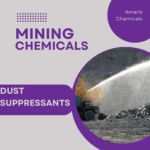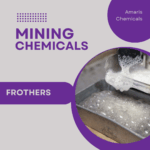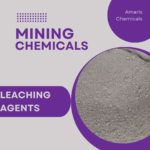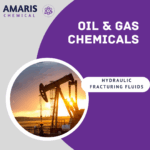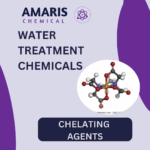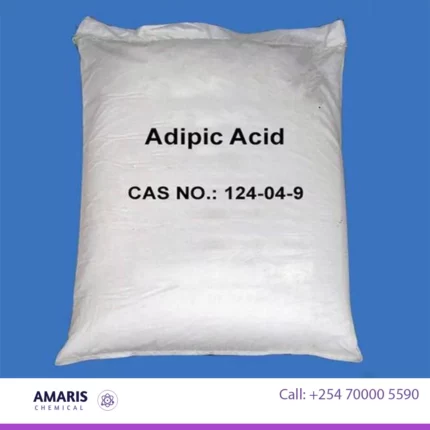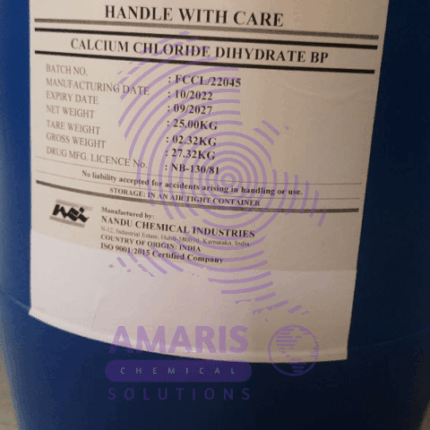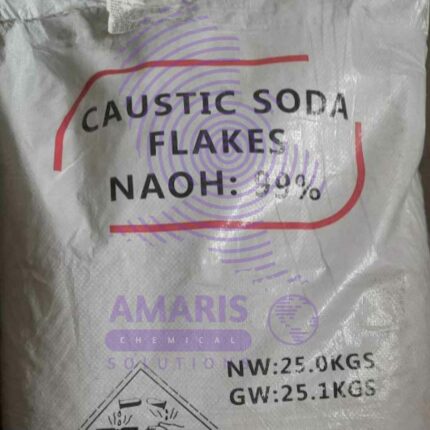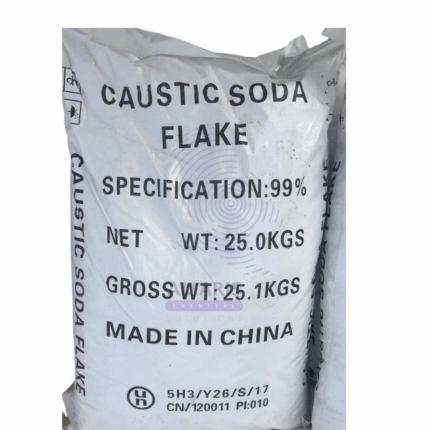Acetaldehyde
Acetaldehyde
Acetaldehyde is a simple organic compound with the chemical formula CH3CHO. It is a colorless liquid with a pungent, fruity odor. Here are some key points about acetaldehyde:
- Chemical Structure: Acetaldehyde consists of two carbon atoms, one oxygen atom, and four hydrogen atoms. Its structure is CH3CHO, where the carbon atom in the middle is doubly bonded to an oxygen atom and singly bonded to a hydrogen atom and a methyl group (CH3).
- Occurrence: Acetaldehyde can be found naturally in various ripe fruits, coffee, and heated milk. It is also produced by the oxidation of ethanol (alcohol) by enzymes in the liver and other tissues in humans, making it an intermediate product in alcohol metabolism.
Adipic Acid
Adipic acid, chemically known as hexanedioic acid (C₆H₁₀O₄), is a key industrial organic compound recognized for its role in polymer production. Primarily, it serves as a crucial precursor in the manufacture of nylon 6,6, where it reacts with hexamethylenediamine to form this durable synthetic polymer, widely used in textiles, automotive components, and industrial plastics. Beyond nylon, adipic acid is integral to producing polyurethane foams, found in mattresses, insulation, and car seats, due to its ability to enhance material flexibility and strength. It also finds applications as a food additive (E355), where it acts as an acidity regulator in gelatin desserts, beverages, and baked goods. Additionally, adipic acid derivatives are used in plasticizers for PVC products, synthetic lubricants, adhesives, and even cosmetics. While traditionally derived from petroleum-based processes, growing interest in sustainable alternatives has spurred research into bio-based production methods using renewable resources. Overall, adipic acid’s versatility makes it indispensable across multiple industries, from manufacturing to food technology
Ammonium bicarbonate
Ammonium bicarbonate is a white, crystalline compound with the chemical formula NH4HCO3. It is a type of inorganic salt that is commonly used in the food industry as a leavening agent for baking, as well as in the production of ceramics, dyes, and other chemicals. When heated, ammonium bicarbonate decomposes into ammonia, carbon dioxide, and water vapor, which causes dough to rise and become light and fluffy. It is also known as hartshorn or baker's ammonia.
Ammonium Lactate
Ammonium lactate is a combination of lactic acid and ammonium hydroxide. It's commonly used as a moisturizer to treat dry, scaly, itchy skin conditions, such as ichthyosis vulgaris and xerosis. The lactic acid component helps to exfoliate dead skin cells, while the ammonium hydroxide component helps to moisturize and soften the skin. It's available in various forms, including lotions and creams, and typically requires a doctor's prescription for use.
Ascorbic acid
Ascorbic acid, also known as vitamin C, is a water-soluble vitamin that plays an important role in various physiological processes in the human body. It is an essential nutrient that cannot be produced by the body and must be obtained through dietary sources or supplements. Ascorbic acid acts as a powerful antioxidant, protecting cells and tissues from oxidative damage caused by free radicals. It also plays a critical role in the production of collagen, which is important for the health of skin, bones, and other connective tissues. Additionally, ascorbic acid is involved in the synthesis of neurotransmitters and the metabolism of proteins and fats. Deficiency in ascorbic acid can lead to a range of health problems, including scurvy, a condition characterized by fatigue, weakness, and bleeding gums.
Bromelain
Bromelain is a powerful enzyme complex found primarily in the stems and cores of pineapples (Ananas comosus). It is renowned for its proteolytic properties, which means it has the ability to break down proteins into smaller peptides and amino acids. This natural enzyme mixture contains various proteases, such as bromelainases, stem bromelain, and fruit bromelain, which work synergistically to facilitate protein digestion.
Bromelain has gained significant attention for its potential health benefits and is commonly used as a dietary supplement. It has been credited with anti-inflammatory properties and has been studied for its ability to reduce swelling, bruising, and pain associated with various conditions, such as osteoarthritis and sports injuries. Additionally, bromelain has been shown to aid in the digestion of dietary proteins, which can contribute to improved gastrointestinal health.
Furthermore, bromelain has been explored for its potential therapeutic applications beyond digestion and inflammation. It has demonstrated promising effects on immune modulation, cardiovascular health, respiratory conditions, and even cancer treatment. However, further research is needed to fully understand and confirm these potential benefits.
Overall, bromelain can be described as a natural enzyme complex derived from pineapples that exhibits proteolytic activity, making it valuable for protein digestion. Its potential health benefits extend beyond digestion and include anti-inflammatory effects and various therapeutic applications.
Calcium chloride Dihydrate
Calcium chloride dihydrate is a chemical compound with the molecular formula CaCl2·2H2O. It is a crystalline salt that is highly soluble in water and has a variety of industrial and medical applications. It is commonly used as a desiccant to absorb moisture, as a de-icing agent for roads and sidewalks, and as a food preservative. It is also used in the production of cement, as a laboratory reagent, and in medicine as a source of calcium for intravenous therapy.
Caustic Soda Flakes
Caustic Soda Flakes (Sodium hydroxide,) commonly known as caustic soda or lye, is a highly caustic and alkaline compound that is used in various industries for its strong basic properties, including the production of soaps, detergents, and paper. It is a white, odorless solid that is highly soluble in water and can be extremely hazardous if not handled properly. Sodium hydroxide is a strong base that can cause severe burns and tissue damage upon contact with skin and other organic matter.



 LABORATORY EQUIPMENT & APPARATUS
LABORATORY EQUIPMENT & APPARATUS
 Fertilizers
Fertilizers Plant Growth Regulators
Plant Growth Regulators Soil Conditioners
Soil Conditioners Animal Feed Additives
Animal Feed Additives Biostimulants
Biostimulants Dough Conditioners
Dough Conditioners Flour Treatments
Flour Treatments Fat Replacers
Fat Replacers Preservatives (baking)
Preservatives (baking)
 Surfactants (cleaning)
Surfactants (cleaning) Builders
Builders Bleaching Agents
Bleaching Agents Enzymes
Enzymes Solvents (cleaning)
Solvents (cleaning) Fragrances
Fragrances











